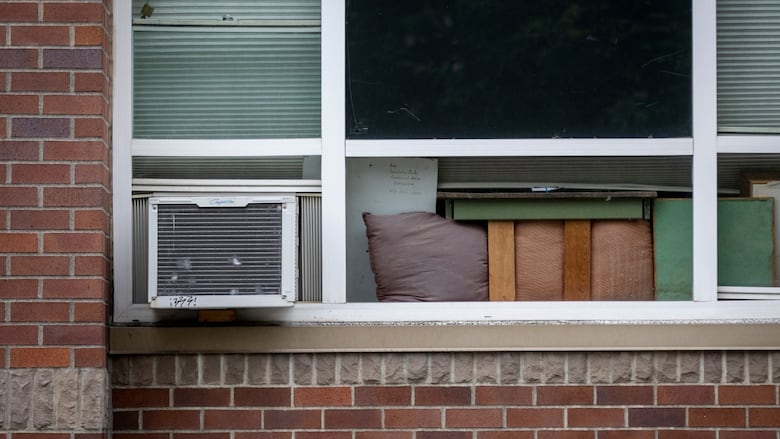AC shouldn't be first line of defence in maximum temperature law, experts say
Passive cooling building regulations a preferable alternative, according to experts

Air conditioners in every apartment shouldn't be the first line of defence against extreme heat, experts say, because there's not enough labour to install them in every building quickly, and there's an environmental cost to relying on them.
Amid a heat wave in early July, Catherine McKenney, the NDP's housing critic and representative for Ottawa Centre, said they plan to bring a motion to Queen's Park this fall that would cap apartment temperatures at 26 C.
"It's not only a question of should we do this — it's a question of can we do this?" said Jeffrey Siegel, a professor of civil engineering at University of Toronto whose work focuses on ventilation and sustainable buildings.
As extreme heat events become more common due to climate change, some kind of maximum temperature regulation for rental properties is important to keep people safe, he agreed, but a requirement to install air conditioning in all regulated buildings would face practical hurdles.
"One of the best things that we could do is avoid the need for air conditioning by retrofitting our buildings to make them so the maximum temperature is less of an issue," he said.

Practical hurdles
A shortage of skilled workers would slow the implementation of McKenney's proposed law, Siegel said.
"I do this for a living, right? And I can't find a good HVAC contractor," he said.
Even if there were enough workers, all those additional AC units could overload the grid, he added.
But there are ways to cool an apartment by several degrees without AC, said Marianne Touchie, the Canada Research Chair in Sustainable Urban Housing and associate professor at the University of Toronto.
Experts don't just measure the temperature of a space, they find its "thermal comfort" level, which is calculated by considering temperature, humidity, wind speed and solar radiation (whether or not you're in direct sun or shade).

An apartment could technically be 28 degrees, but might feel like 26 degrees if it's in the shade, windows are closed and a fan is running, Touchie said, explaining that focusing exclusively on the temperature is "overly simplistic."
Touchie's work focuses on retrofitting old buildings to find ways to "get a lot more out of them."
Retrofit strategies to cool a space include:
- Adding overhangs, external shades or special coatings to windows to reduce solar radiation.
- Installing ceiling fans to promote air flow.
- Planting trees to provide shade.
- Replacing windows with styles that can open further for better cooling at night.
Government stepping in
Duncan Phillips, a retired air flow expert with the Guelph-based company RWDI, said even more strategies are available to developers working on new builds, which aren't restricted by existing infrastructure.
"If we just spend a little bit more time in design and a little bit more effort during construction, we would save a fortune when it comes to actually occupying the building later on," Phillips said, as occupants wouldn't be paying to run the AC as often.
"But if your job as a developer is just simply to get the thing built and flip it, you're unlikely to want to put a lot of effort into design and construction," he added, suggesting that the government provide incentives to developers to build with thermal efficiency in mind.
Touchie also believes the government should introduce passive cooling regulations for buildings.

"I think there needs to be some sort of legislation [that] you need to have these effective passive elements in your building as part of a retrofit before you're going the mechanical cooling route," Touchie said.
It's essential, she said, because over-reliance on AC could worsen climate change.
"We're using so much more energy to provide that mechanical cooling," she said.
Siegel agreed, noting that when electricity demand reaches peak, "we have to turn on our dirtiest power plants or most expensive power plants."
While passive cooling regulations would be more complex than requiring AC installation, they would be more effective in the long term, Touchie said. "If we really want to do this right, it requires a more nuanced approach."


